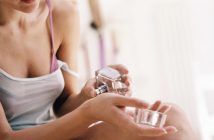 Your skin has been through a lot – birth, learning to walk, learning to ride a bike, holding your first crush’s hand, jumping out of trees, bathing in the sunshine, and then some. No matter what you choose to put your skin through, it’s always there, growing with you, patching you up and keeping the bad at bay.
Your skin has been through a lot – birth, learning to walk, learning to ride a bike, holding your first crush’s hand, jumping out of trees, bathing in the sunshine, and then some. No matter what you choose to put your skin through, it’s always there, growing with you, patching you up and keeping the bad at bay.
If you haven’t taken a moment to appreciate your skin, here’s why you should:
- Skin is the body’s largest organ
- Counts for 15% of your body’s weight
- Your skin comprises of three different layers: epidermis, dermis and hypodermis
- the human body comprises of two different skin types: hairy and glabrous. Glabrous are parts of our body that is naturally without hair, like the palms of your hand and soles of your feet
- Every inch of your body houses approximately 19 000 000 skin cells
- Your skin’s elasticity and strength is dependent on its location. Your eyelids are the thinnest and the soles of your feet the thickest
- You lose between 30 000 and 50 000 skin cells every minute
- More than 50% of the dust in your home is dead skin cells
- Scar tissue has no sweat glands and hair follicles
- You have up to 14 different kinds of fungi living in between your toes
- Sweat odours are caused by a fatty secretion from the apocrine sweat glands. This reaction usually occurs around the armpit, genital and anus regions
- Every hair on your body is supported by the arrector pili muscle that raises the strand when you are cold or emotional. This muscle is also responsible for goose bumps.
- Skin gets its colour from melanin. A melanocyte-stimulating hormone produces a pigment called melanin. The amount of melanin in your system will determine your skin, hair and eye colour
- Skin on your lips is over 200 times more responsive than the skin on your fingertips
Apart from the above, the skin is also responsible for regulating body temperature, creating Vitamin D and defending against germs and bacteria.


